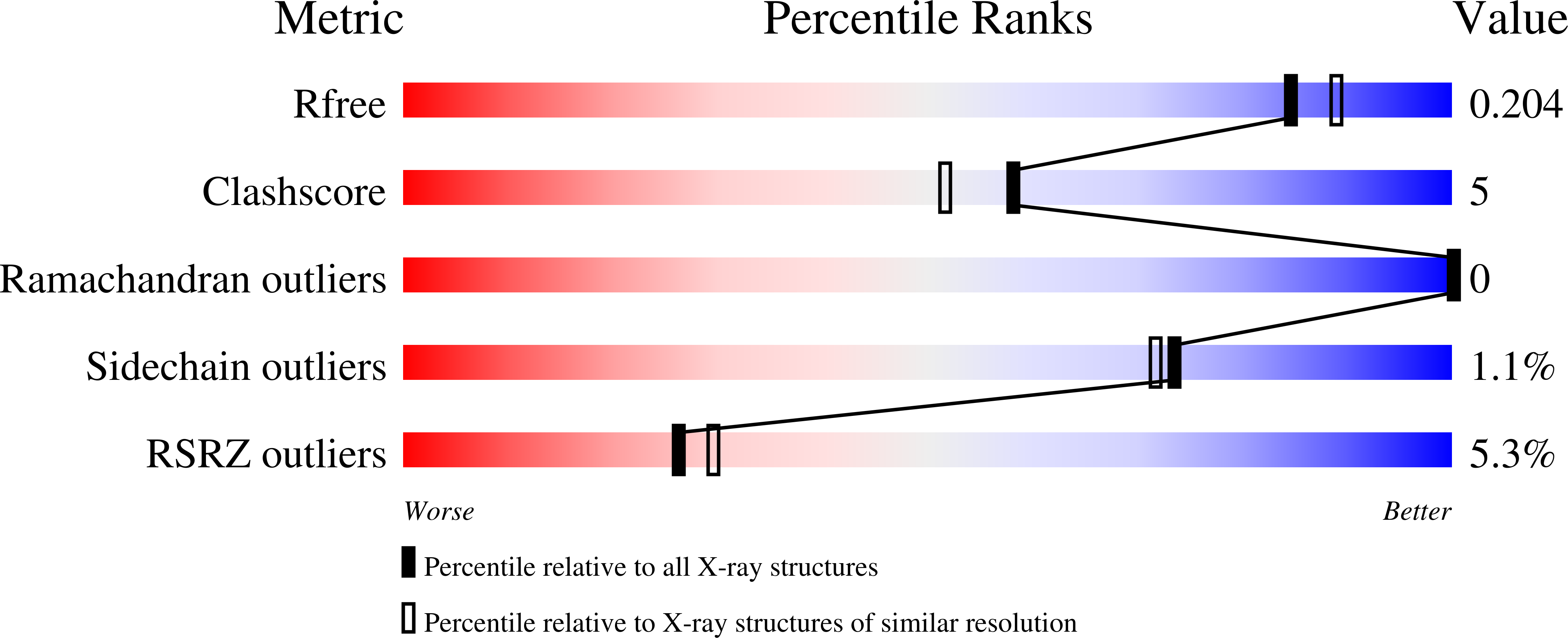Structural Analysis of Substrate, Reaction Intermediate, and Product Binding in Haemophilus influenzae Biotin Carboxylase.
Broussard, T.C., Pakhomova, S., Neau, D.B., Bonnot, R., Waldrop, G.L.(2015) Biochemistry 54: 3860-3870
- PubMed: 26020841
- DOI: https://doi.org/10.1021/acs.biochem.5b00340
- Primary Citation of Related Structures:
4MV1, 4MV3, 4MV4, 4MV6, 4MV7, 4MV8, 4MV9, 4RZQ - PubMed Abstract:
Acetyl-CoA carboxylase catalyzes the first and regulated step in fatty acid synthesis. In most Gram-negative and Gram-positive bacteria, the enzyme is composed of three proteins: biotin carboxylase, a biotin carboxyl carrier protein (BCCP), and carboxyltransferase. The reaction mechanism involves two half-reactions with biotin carboxylase catalyzing the ATP-dependent carboxylation of biotin-BCCP in the first reaction. In the second reaction, carboxyltransferase catalyzes the transfer of the carboxyl group from biotin-BCCP to acetyl-CoA to form malonyl-CoA. In this report, high-resolution crystal structures of biotin carboxylase from Haemophilus influenzae were determined with bicarbonate, the ATP analogue AMPPCP; the carboxyphosphate intermediate analogues, phosphonoacetamide and phosphonoformate; the products ADP and phosphate; and the carboxybiotin analogue N1'-methoxycarbonyl biotin methyl ester. The structures have a common theme in that bicarbonate, phosphate, and the methyl ester of the carboxyl group of N1'-methoxycarbonyl biotin methyl ester all bound in the same pocket in the active site of biotin carboxylase and as such utilize the same set of amino acids for binding. This finding suggests a catalytic mechanism for biotin carboxylase in which the binding pocket that binds tetrahedral phosphate also accommodates and stabilizes a tetrahedral dianionic transition state resulting from direct transfer of CO₂ from the carboxyphosphate intermediate to biotin.
Organizational Affiliation:
†Department of Biological Sciences, Louisiana State University, Baton Rouge, Louisiana 70803, United States.

















